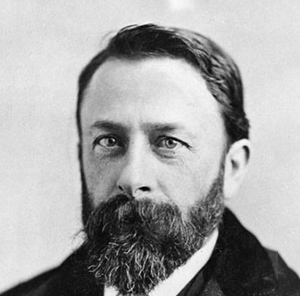
Albert Bierstadt remains one of the highest-regarded American artists of the nineteenth century, travelling across the continent to reach natural landscapes where nothing was yet touched by human hands. His many trips to the wilderness from 1859 to 1873 resulted in several monumental art pieces, received with great praise. Wilderness always inspired him as the greatest source of artistic motifs. Today, his paintings hold even more value, as they depict scenery that is now lost or altered because of human interference. Bierstadt’s trips into the West tell a story of nature losing innocence, as his first trip to Lake Tahoe was through the untamed wilderness in a horse-pulled wagon. Just a few years later, he travelled there by a newly constructed railroad that sprung tourism, hotels, and shops around the lake, seemingly overnight. As a result, his romantic depictions were dubbed »impressions of solitary grandeur«.
Born in Prussia, he studied art in Düsseldorf and later became a part of the famous Hudson River School in New York. This was the birth of his painting style, contrasting strong, almost glowing light with tranquil nature. His paintings awarded him membership in the National Academy of Design and many prestigious awards both in America and in Europe, and even a private reception with Queen Victoria in London.
He paid for a substitute to take his place in the draft in 1863 during America’s civil war, which gave him time to paint some of the most monumental pieces.
